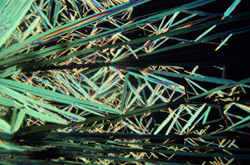Seagrass mirrors ecosystem damage
Seagrass creates an underwater meadow in coastal zones. It creates its own complex ecosystem with its long waving leaves. Its rhizomes grow into the seabed and prevent coastal erosion. The plants are normally long-lived and can survive for 30 years. Unfortunately, input of organic pollutants in the form of nitrogen and phosphorus are directly toxic to seagrass. Algal blooms, the result of mineral input through eutrophication, cut out the light for its photosynthesis. Seagrass meadows therefore are very sensitive to pollution. From a commercial point of view, seagrass was traditionally used to stuff mattresses as it is a deterrent to bed bugs. It can be used to thatch roofs and is woven for raffia as furniture. It makes good animal feed and fertiliser. As such, awareness within the local economy has highlighted its demise and local employers are keen to maintain stocks. Researchers at the University of Barcelona aimed to pre-empt the destruction of the coastal Mediterranean waters by using seagrass as an indicator species. The university team have devised a set of descriptors to gauge optimum health of the grass and then stages in its decline to death. The sensitivity of seagrass to environmental disturbances makes it an ideal candidate for a bioindicator of pollution. Application of the descriptors to an ecosystem act as a reflection of the health of the seagrass and the level of pollution. As an instrument for ecological study, the team have registered the copyright of the descriptors. It can therefore be used as a tool in surveys.



